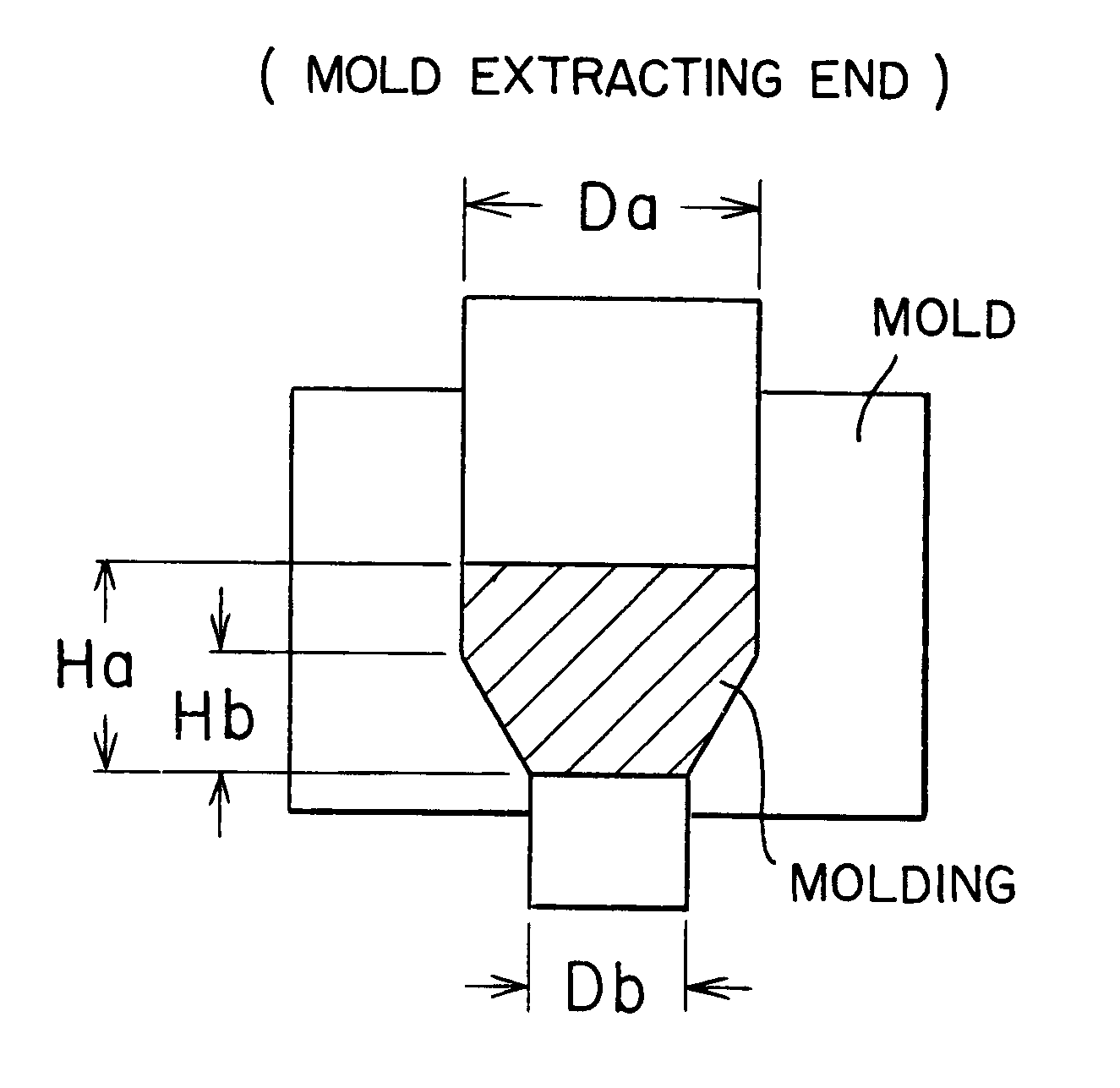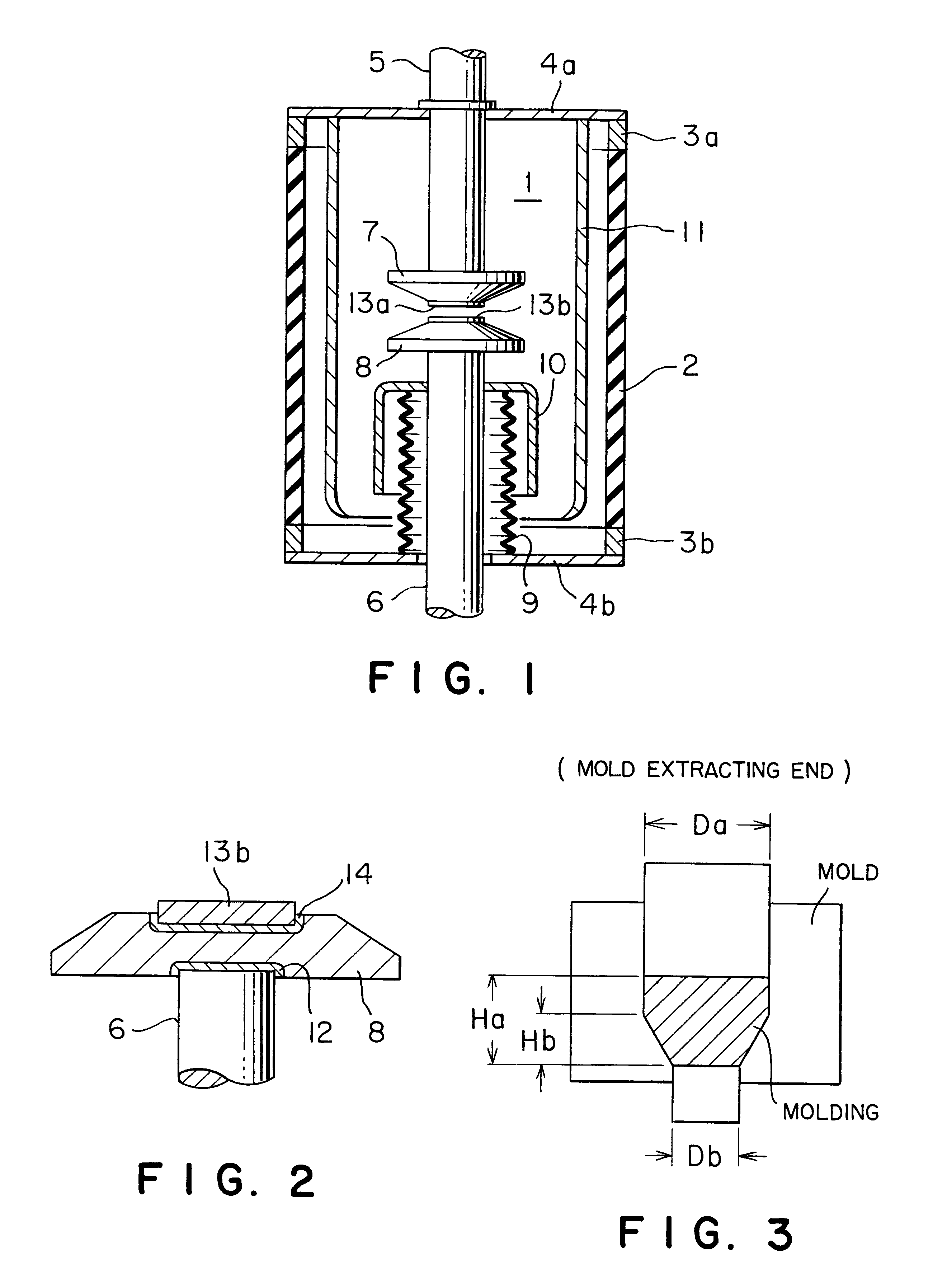Contact material for contacts for vacuum interrupter and method of manufacturing the contact
a technology of contact material and vacuum interrupter, which is applied in the direction of contact material, contact, electrical equipment, etc., can solve the problems of high surge impedance load, inability to provide a stable low chopping current characteristic, and failure to provide a stable load circui
- Summary
- Abstract
- Description
- Claims
- Application Information
AI Technical Summary
Benefits of technology
Problems solved by technology
Method used
Image
Examples
examples 1 to 3
respectively having an arc-proof component content in the range of 30 to 50% by weight were satisfactory in breaking characteristic, chopping characteristic and current carrying characteristic.
The interrupting ability of Comparative example 1 having an arc-proof component content greater than those of Examples 1 to 3 was rejectable.
The relative maximum interrupting current of Comparative example 2 having an arc-proof component content smaller than hose of Examples 1 to 3 was greater than 2.0.
examples 4 to 6
Re: Examples 4 to 6 and Comparative Examples 3 and 4
The infiltrating material for Examples 4 to 6 and Comparative examples 3 and 4 was a Cu-1 wt %Cr alloy. An arc-proof material having a mean particle diameter of 1.3 .mu.m was used. The alloys forming the alloy contacts had a conductive component content (Cu+Cr content) of 60% by weight and an arc-proof component content (TiC content) of about 40% by weight. Cu--TiC alloys respectively having different hydrogen contents in the range of 0.1 to 70 ppm were produced by using TiC powders exposed to the atmosphere for different periods, respectively, before being infiltrated into the skeletons, and adjusting the degree of vacuum at 100.degree. C. immediately before infiltration.
All Examples 4 to 6 using the Cu--Ti alloys having hydrogen contents in the range of 0.2 to 50 ppm were satisfactory in current interrupting ability, chopping current characteristic and current carrying ability. Comparative example 3 using the Cu--Ti alloy having ...
examples 7 to 9
using the arc-proof materials having mean particle diameter not greater than 8 .mu.m were satisfactory in interrupting ability and chopping current characteristics.
The interrupting ability of Comparative example 5 using the arc-proof material having a mean particle diameter of 10 .mu.m was rejectable.
PUM
| Property | Measurement | Unit |
|---|---|---|
| Fraction | aaaaa | aaaaa |
| Fraction | aaaaa | aaaaa |
| Time | aaaaa | aaaaa |
Abstract
Description
Claims
Application Information
 Login to View More
Login to View More - R&D
- Intellectual Property
- Life Sciences
- Materials
- Tech Scout
- Unparalleled Data Quality
- Higher Quality Content
- 60% Fewer Hallucinations
Browse by: Latest US Patents, China's latest patents, Technical Efficacy Thesaurus, Application Domain, Technology Topic, Popular Technical Reports.
© 2025 PatSnap. All rights reserved.Legal|Privacy policy|Modern Slavery Act Transparency Statement|Sitemap|About US| Contact US: help@patsnap.com


